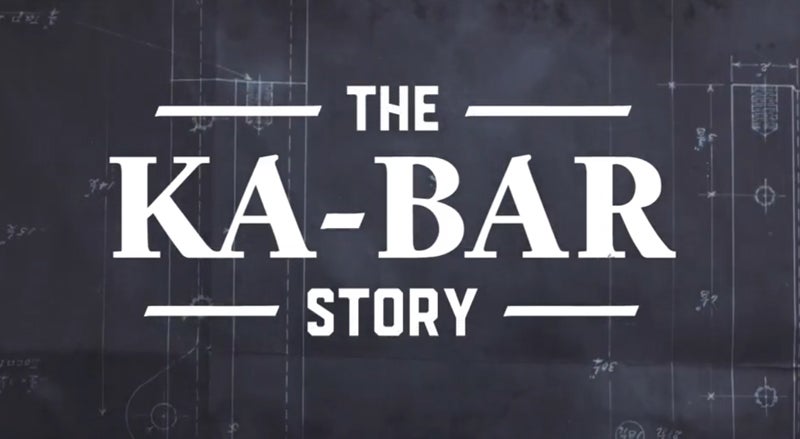Watch: The KA-BAR Story
Russ Chastain 07.15.19

This video tells the tale of Ka-Bar knives, in documentary style complete with actors and professional-quality production.
The story really begins with a name any “knife guy” will recognize: Case.
More than 30 cutlery operations connected to the Cases branch out over the span of a few decades. This dynasty begins with Job Case…
One of Job’s grandsons, Wallace Brown, became a traveling knife salesman, learning the ropes of the business, then started The Union Razor Company, a mail-order cutlery business, in 1894. His brother Emerson joined the company as well, expanding into the warehousing business as well as selling razors made for them by local companies and sold under the company name Brown Brothers Razor. It was a flop.
Some years later, Wallace bought out a struggling knife company in Tidioute, PA. Before long, the company’s name was changed to The Union Razor Company, hearkening back to his earlier effort. Down the road, they began making more knives and changed the name again. In 1909 it was renamed The Union Cutlery Company.
When approached by the Chamber of Commerce of Olean, NY, who offered bribes such as tax breaks, land, and even a building if he would move to Olean from Tidioute, Wallace accepted. The company was successful and their hunting knives became popular. Then one fateful day, an interesting package was received by Wallace Brown.
In the package was the skin of a Kodiak bear and a letter written by an Alaskan hunter who wished to thank the Union Cutlery Company for “their outstanding knives.” This morphed into a legend that the original of the Ka-Bar was based on “kill a bear (or b’ar).”
The current company owners heard this legend when they purchased Ka-Bar, but never knew for sure until they found some old documents.
The truth was never really totally known until recently. Twenty years after we purchased the company we unearthed a document… a manual written by the grandson of one of the original owners of Union Cut[lery]. In there, it specifically references the letter…
This corroborated the story, although the manual excerpt leans more towards “Kodiak” as the source of the “K.”
At any rate, the Ka-Bar name became a registered trademark in 1924.
In the midst of the Great Depression, leadership of the company was left in the hands of 26-year-old Danforth Brown after his father and uncle both died young. Union Cutlery made it through, and was ready and able when World War 2 came around with its many manufacturing jobs.
The most famous combat knife to emerge at this time was the 1219C2, or USMC Fighting Utility Knife, which was designed by USMC Capt. (some sources say Maj.) Howard America, USMC Col. John Davis — and Danforth Brown.
At this time, Danforth made the fateful decision to mark products made for the war with the Ka-Bar name, rather than “Union Cutlery.”
Most 1219C2 knives were made by other companies, but most troops seemed to agree that a Ka-Bar branded 1219C2 was better than the rest. The name gained such popularity that Union eventually changed the company name to Ka-Bar.
When hard times came again, Danforth agreed to the same sort of “relocation bribery,” this time moving the company to Dawsonville, Georgia. It was a huge mistake, and two years later he was back in New York where an established factory and skilled workforce stood ready to make more Ka-Bars.
Danforth passed away in 1970, and the company was bought and sold numerous times, eventually going bankrupt. After being saved a time or two, Ka-Bar was purchased by a large conglomerate who used the brand on cheap imported knives. It was a sad time for anyone who really cared about the Ka-Bar name.
Cutco, then known as Alcas, bought Ka-Bar in the mid-1990s. Alcas had been making the old classic Ka-Bar-branded fighting knife for a couple of decades, so it was a natural fit as far as that goes. With the surge of warfare in the early 2000s, a new generation of soldiers began using Ka-Bar knives. Working with independent knife designers has also been lucrative for them in recent years.
In April 2018, the company celebrated “120 years in the Ka-Bar story.”
